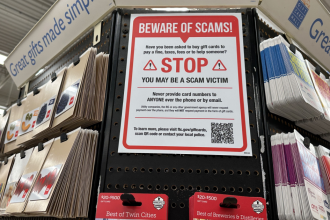One of the most common ways to fall behind when paying off credit cards is to be caught off guard by an unexpected medical expense or repair bill that wrecks your carefully planned budget. To protect yourself from this financial pitfall, our credit counseling advice is to have emergency savings in place. A cash reserve limits the consequences when unexpected expenses occur.
A 2015 Federal Reserve Board survey (“Report on the Economic Well-Being of U.S. Households in 2015.”) found that 46% of American consumers would be unable to cover an emergency cost of $400 or more without using some form of credit. Using credit for emergencies is a dangerous practice that you should avoid if at all possible. Here are some saving tips and strategies that can help you build up emergency savings to avoid unnecessary consumer debt.
Emergency Savings Starter Tips
- Start Small – Know your budget and figure out a realistic amount to put aside. Whether you can put aside $10 a week or $10 a day, start with a number your budget can handle. Make sure you include this new “expense” in your budget.
- Reduce Spending – Identify specific areas where you can cut back. Common ways include making all meals at home, turning off lights and AC whenever possible, and reducing or canceling your cable subscription. See ACCC’s Save by Cutting Back Guide for more tips.
- Generate Cash – Identify household items or clothes that you no longer need or use. Sell them to quickly boost cash on hand. You can put that money directly toward your emergency savings.
Now that you’ve gotten a little cash together or generated momentum by starting to save more each month, implement some strategies to grow your emergency savings a little faster. This will limit the risk of credit problems due to emergency spending.
Emergency Savings Booster Strategies
- Set Achievable Milestones – Setting SMART goals will help build momentum. Start with trying to get to $100 set aside. Then go for $500, and keep going with concrete target amounts until you’ve got enough to cover a few months worth of expenses.
- Make The Money Work for You.– Shop around at local banks, credit unions, or online-only banks for an interest-earning account to store your emergency cash. This allows your emergency fund to grow on its own.
- Make it Automatic – Once your emergency fund is held in its own account, set up automatic transfers so you never forget to contribute. This will ensure steady growth of your fund. This will also help integrate this new saving task into your standard budgeting routine.
Getting out of debt is easier when you take steps to protect yourself from relying on credit in a pinch. Putting even a little money aside as emergency savings each month can better protect you from financial stress when disaster strikes.
If you’re struggling to pay off debt, ACCC can help. Schedule a free credit counseling session with us today.
Read the full article here














